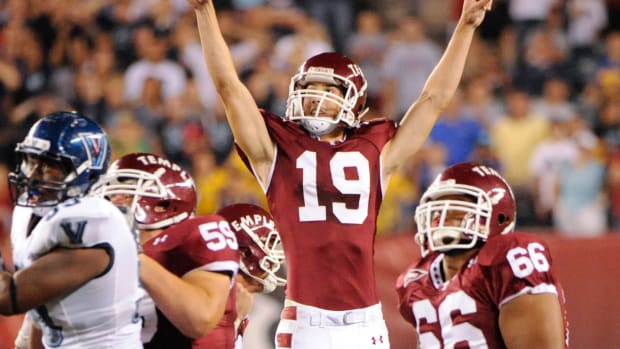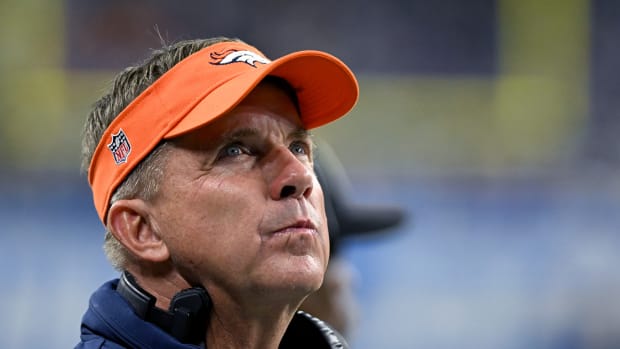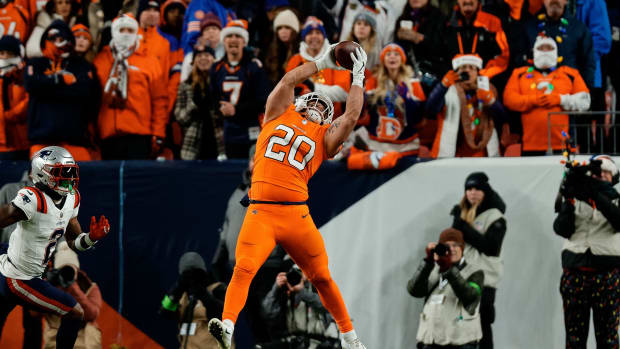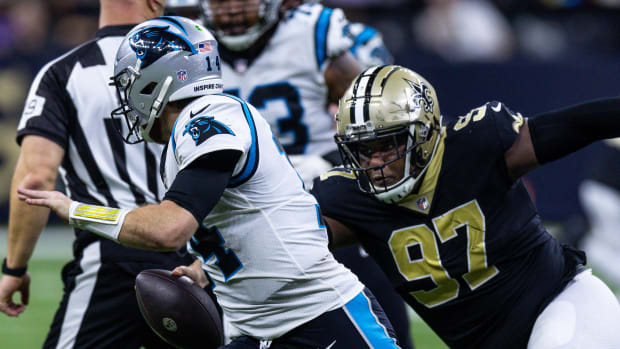Alabama WR Henry Ruggs III Mocked to the Broncos at Pick 15 by ESPN's Mel Kiper, Jr.
In his first official Mock Draft of the 2020 Draft Season, ESPN Senior Draft Analyst Mel Kiper Jr. had the Denver Broncos selecting the speed demon from the Crimson Tide at pick 15 in the first round.
“Does Denver have its quarterback of the future? Second-round pick Drew Lock, who flashed in his late-season cameo, has given Broncos fans hope, and he'll get every opportunity to start all 16 games in 2020. So let's help him out and give him the draft's fastest pass-catcher to pair with Courtland Sutton, who looks like he could be a future superstar. Ruggs took a step forward as a route runner this season, but his game is all about speed — he can run by any defensive back. I also thought about cornerback here, especially with veteran Chris Harris Jr. hitting free agency. There could also be a hole at safety if the Broncos get priced out of Justin Simmons' looming free-agent payday.”
Ruggs III is still a bit raw as an overall player. Given that Alabama rostered three other NFL-caliber wide receivers, on top of having a stable of running backs and a good defense, the overall volume Ruggs was given in his career at Tuscaloosa may seem smaller than one would expect given his high profile. Finishing his career with 98 receptions for 1,716 yards, 17.5 yards per reception, and 24 touchdowns, one would expect more output from a receiver drafted in the top half of the first round.
Why pass the ball 50 times a game when most games Alabama was in were essentially over and decided by about the 10-minute mark in the third quarter? It just doesn’t make football sense.
Sometimes looking at metrics such as market share requires context in order to coax out the real takeaway. Even though Ruggs was not get peppered with targets, he was extremely efficient and explosive each time he touched the football. Scoring a touchdown every 4.08 catches for his career? It doesn’t get much better than that.
More on Ruggs's time at Alabama shortly; let's see how he'd fit in with the Broncos' offense.
Need for Speed
Stop me if you've heard this one before; the Broncos are desperate for speed. While the Broncos have some exciting young skill players on the offensive side of the ball — like WR Courtland Sutton, TE Noah Fant, and RB Phillip Lindsay — that trio simply hasn’t shown to be enough to help lift the offense out of bottom-quarter ranking in the NFL.
Look no further than the teams playing in Super Bowl LIV — the Kansas City Chiefs and San Francisco 49ers. The mandate is, find explosive players and get them the ball in space to create chunk yards on offense.
Fortunately, the five-game sample size of rookie quarterback Drew Lock undoubtedly offers hope for an offensive revolution in the Mile High City. The Broncos finished with a 4-1 record down the stretch while averaging 21.4 points per game, as opposed to the 15.9 PPG the team averaged before the entrance of Lock. As a word of caution, like head coach Vic Fangio alluded to last season, sometimes with such a small sample size, a player can give off a false positive (or false negative), but Lock’s play in the offense was promising nevertheless.
Not only did the offense improve under Lock, but the line specifically seemed to take a step forward as a unit. Despite a plethora of injuries all across the O-line, Lock was sacked just three times, hit twice, and hurried four times over the final five games. Whether the credit belongs to venerated O-Line Coach Mike Munchak, or simply Lock being inserted as starting quarterback, the line gelling in general, or some combination of all three, the starting five did appear to be trending in the right direction.
Even with the bump from Lock, the offense was still rather stagnant. Opposing defenses did everything they could to limit Sutton, shading safeties, bracketing him in order to keep the talented wideout from beating them.
Simply put, the opponent did not respect the Broncos’ receivers outside of Sutton and it showed in coverage. DaeSean Hamilton and Tim Patrick did see a bump in statistical output due to this, because the ball has to go somewhere, but neither have shown the ability to be anything beyond solid depth contributors at this point in their careers. Both have roles, but neither offer truly dynamic ability to help draw coverage away from Sutton and give something for defenses to think about in the passing game.
Enter Ruggs.
Speed Demon
What Ruggs brings to the table is speed. Blazing speed. While everyone is fixated on finding the next Tyreek Hill (on the field), Ruggs is one of the few that could challenge Hill step-for-step in any race.
Reportedly running a 4.25-second 40 at Alabama’s Junior Pro Day, Ruggs has a chance to record one of the fastest 40 times ever at the Combine. Furthermore, listed at 6-foot-0, 190 pounds by Alabama, he is a bit wiry currently but by no means is he diminutive.
Ruggs has the frame to add more muscle which he will need in order to fight off press coverage and make catches that demand physicality at the next level. At only 20 years old, he's still growing into his frame.
Ruggs also is rather young in the nuances of playing receiver. While he can simply run past just about anyone, the overall craft of route running is still a work in progress. This is not totally unexpected given previously listed factors, but it definitely is a question with him entering the league.
Ruggs needs to learn how to run routes through contact (or better avoid contact), throttle down, and set up defenders to create separation as opposed to relying on his otherworldly speed.
In the end, there is a reason why folks like Denver insider Benjamin Allbright are continually pointing at someone like Ruggs being a fit for the Broncos at pick 15 in the draft. When the fastest pass-catcher on the team is the tight end, the receiving unit really needs a shot in the arm in terms of a player who plays with rocket skates.
Ruggs not only can help make the Broncos’ offense that much more explosive when he touches the ball, but he can also help create space for everyone else around him. A player with his speed literally dictates opposing defenses coverages, even if he never even touches the football.
The threat of the home run play due to blazing speed is enough to force defenses to alter coverages. From freeing up more one-on-one opportunities and less shaded safeties over Sutton on the boundary, to freeing up space for Fant and Hamilton underneath, to having an explosive playmaker Lock could throw a simple slant or screen to that is a threat to score from anywhere on the field, Ruggs makes everyone on the offense that much better.
Bottom Line
Picking a wide receiver in the first round given the recent trends in the draft seems like a risky proposition, especially with so many day-two receivers stepping up and outperforming their day-one counterparts, but speed always comes at a premium.
Ruggs has a chance to be one of the most explosive receivers in the entire NFL. His speed not only creates opportunities for himself but for everyone around him as well. Pairing him with the likes of Lock, Sutton, Fant, and Lindsay would give Denver one of the most exciting young offensive skill position cores in the league, and perhaps could be the catalyst in Denver finally taking a leap forward from being a consistently woeful offense to one of the better up-and-coming units in the entire NFL.
Follow Nick on Twitter @NickKendellMHH and @MileHighHuddle.





